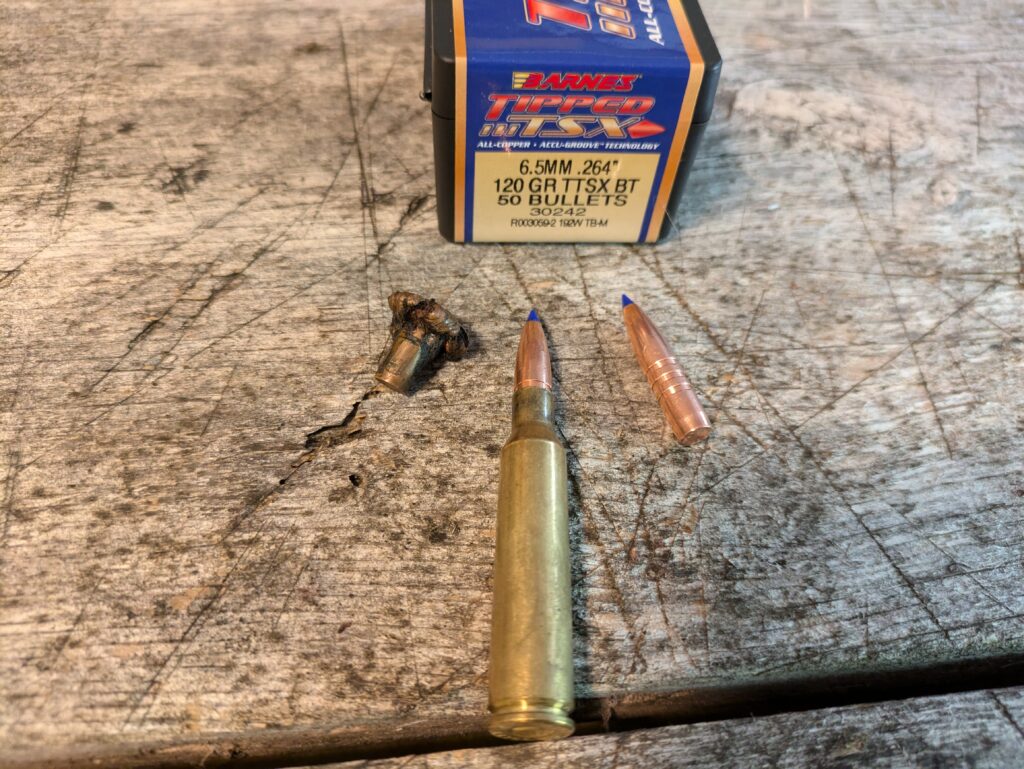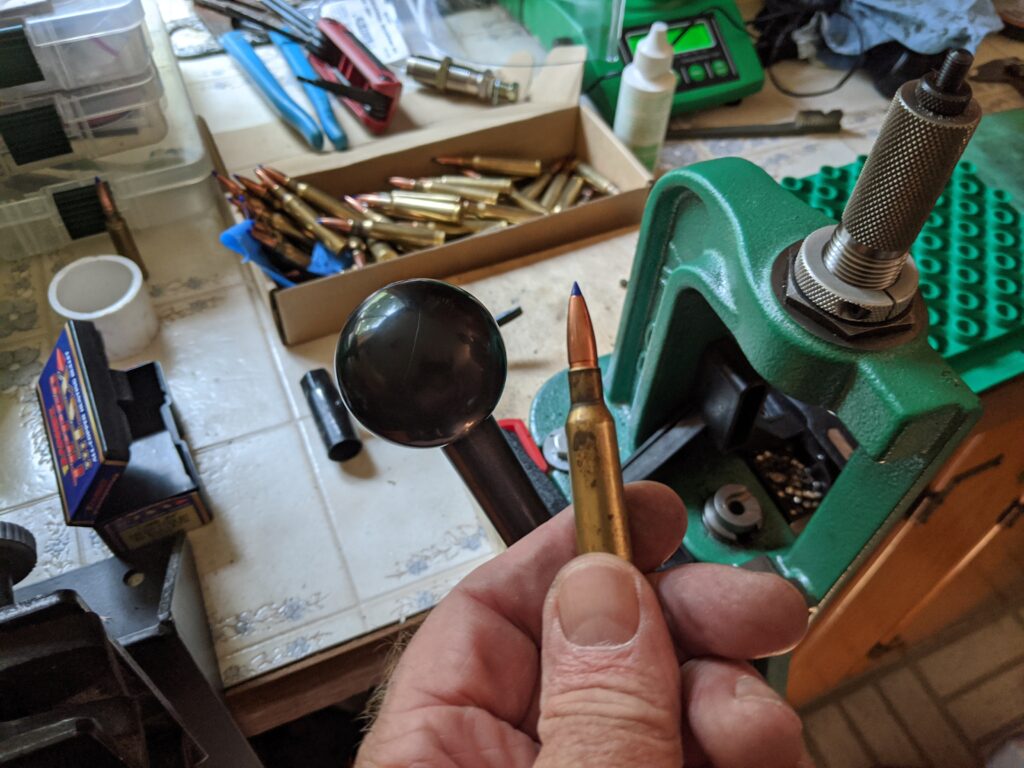Change can be a difficult thing. Especially if you are a Medicare eligible deer hunter who sees no need for a shiny new rifle in the hottest new caliber. I sporterized a Husqvarna brand Swedish military rifle about 25 years ago. It’s been used to take deer, elk, and pronghorn antelope in three different states. It’s accurate and efficient, even in my hands.
So why even consider a change? Maybe because change is sometimes a good thing and not as radical as first thought.
I usually process my own deer and have often dug pieces of lead out of the meat, remnants of bullets that fragmented after impacting the animal. I’ve also participated in the Minnesota Extension’s Services “Offal Watching Project” by placing trail cameras over the gut piles of deer I shot. These cameras recorded eagles, hawks, tweety birds, and all sorts of furry critters dining on the remains—remains that likely included unhealthy lead fragments.
Maybe it was time for a change—a change to non-toxic copper bullets.
The switch wasn’t as easy as I hoped. Factory loaded copper ammunition has become readily available and relatively inexpensive for common deer hunting calibers such as 30.06 and 243. But my old rifle is a metric caliber, 6.5×55. I searched stores big and small, looking for factory loaded lead-free ammo, stubbornly refusing to switch to a more common caliber. I like that old Husqvarna. It’s a sentimental tribute to my Uncle Fred, one of my main hunting mentors. I know many hunters that have resisted the change for similar reasons.
My years of personal and professional experience have taught me that many outdoorsmen and women will share their knowledge and skills when asked. At my age, I’m not afraid of looking or sounding stupid. I asked for help on the Facebook feed of the Minnesota Chapter of the Backcountry Hunters and Anglers, one of the many conservation groups I belong to. Several members took up the pursuit of non-toxic ammo on my behalf. They struck out too.
These guys then asked—“Why don’t you just reload ammo?”
I have resisted taking up another time and gear intensive hobby for reasons including boats, Labrador retrievers, a lake cabin, and hunting trips to exotic places like Montana. But BHA member Benjamin Pena challenged me to make the switch. He offered the use of his equipment, expertise, and some reloading components. I already had empty shell casings, so I rounded up a set of reloading dies, a box of “Barnes” brand TTSX 120 grain copper bullets, and a box of primers.

Given the limitations of my 80-year-old rifle, Ben and I consulted a handloading manual and chose a middle-of-the-road velocity load of 48 grains of “Hodgden 1000” powder topped with the 120 grain copper bullets. I got hands-on experience in priming used shell cases. Ben ran the powder scale, filled cases, and educated me in ramming bullets into the filled cases. Tall hunting tales were swapped in the process of producing 50 rounds of custom ammunition.
I headed out to the gun range and brought along my oldest son’s gun for comparison. Andy shoots another uncommon rifle—a sporterized German Mauser in 8×57. It was Grandpa’s gun, complete with built-in stories and memories. He had been lucky enough to find factory-loaded “Nosler” E-tip copper bullets.
With premium 140 grain lead ammo, my gun is capable of shooting 1-inch groups at 100 yards. Ben and I had loaded lighter 120 grain copper bullets with a similar velocity. The copper reloads proved to be accurate and impacted only 2 inches higher than lead at 100 yards. The chronograph reported a 2,675 foot-per-second (fps) velocity, very close to our 2,700 fps goal. Andy’s Mauser shot 175 grain factory Nosler E-tips much higher than lead. They were off the paper target at 100 yards but easy to correct and proof that practice is a good thing.
Both these guns went along on our annual trip to Montana in October. I shot two of those copper reloads. One found a mule deer at 240 yards, broke both shoulders, and exited leaving a big clean hole without blowing apart and leaving fragments spread throughout the meat. The antelope buck I shot at 25 yards wasn’t much of an accuracy test, but again there was no significant meat damage. Andy shot only one of his factory copper rounds. That mule deer dropped in place at 100 yards.
So how would these new-fangled bullets fare in the Minnesota woods in November? My youngest son found out. Steve likes the old Husqvarna and uses it since I often sit out the rifle season to save my tag for the late muzzleloader hunt. He shot a heavy weight Northwoods buck at point blank range—less than 10 yards. It was a quick, clean kill that resulted in a recovered bullet from just under the hide on the opposite side of the deer. The bullet expanded as advertised and expended all its energy in passing through both shoulders. It did not fragment and still weighed 120 grains after being recovered.
I am now a big fan of this newfangled ammunition in my old-fashioned rifle and won’t be going back to lead. In this case, change has been a good thing. I made new friends, learned new things, and don’t have to worry about who or what is having lead for dinner. Mike Lein

